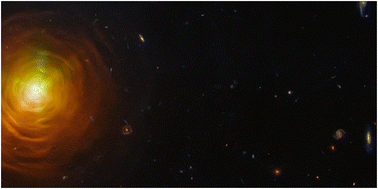Disentangling physics and chemistry in AGB outflows: revealing degeneracies when adding complexity†
Abstract
Observations of the outflows of asymptotic giant branch (AGB) stars continue to reveal their chemical and dynamical complexity. Spherical asymmetries, such as spirals and disks, are prevalent and thought to be caused by binary interaction with a (sub)stellar companion. Furthermore, high density outflows show evidence of dust–gas interactions. The classical chemical model of these outflows – a gas-phase only, spherically symmetric chemical kinetics model – is hence not appropriate for the majority of observed outflows. We have included several physical and chemical advancements step-by-step: a porous density distribution, dust–gas chemistry, and internal UV photons originating from a close-by stellar companion. Now, we combine these layers of complexity into the most chemically and physically advanced chemical kinetics model of AGB outflows to date. By varying over all model parameters, we obtain a holistic view of the outflow's composition and how it (inter)depends on the different complexities. A stellar companion has the largest influence, especially when combined with a porous outflow. We compile sets of gas-phase molecules that trace the importance of dust–gas chemistry and allow us to infer the presence of a companion and porosity of the outflow. This shows that our new chemical model can be used to infer physical and chemical properties of specific outflows, as long as a suitable range of molecules is observed.

- This article is part of the themed collection: Astrochemistry at high resolution


 Please wait while we load your content...
Please wait while we load your content...